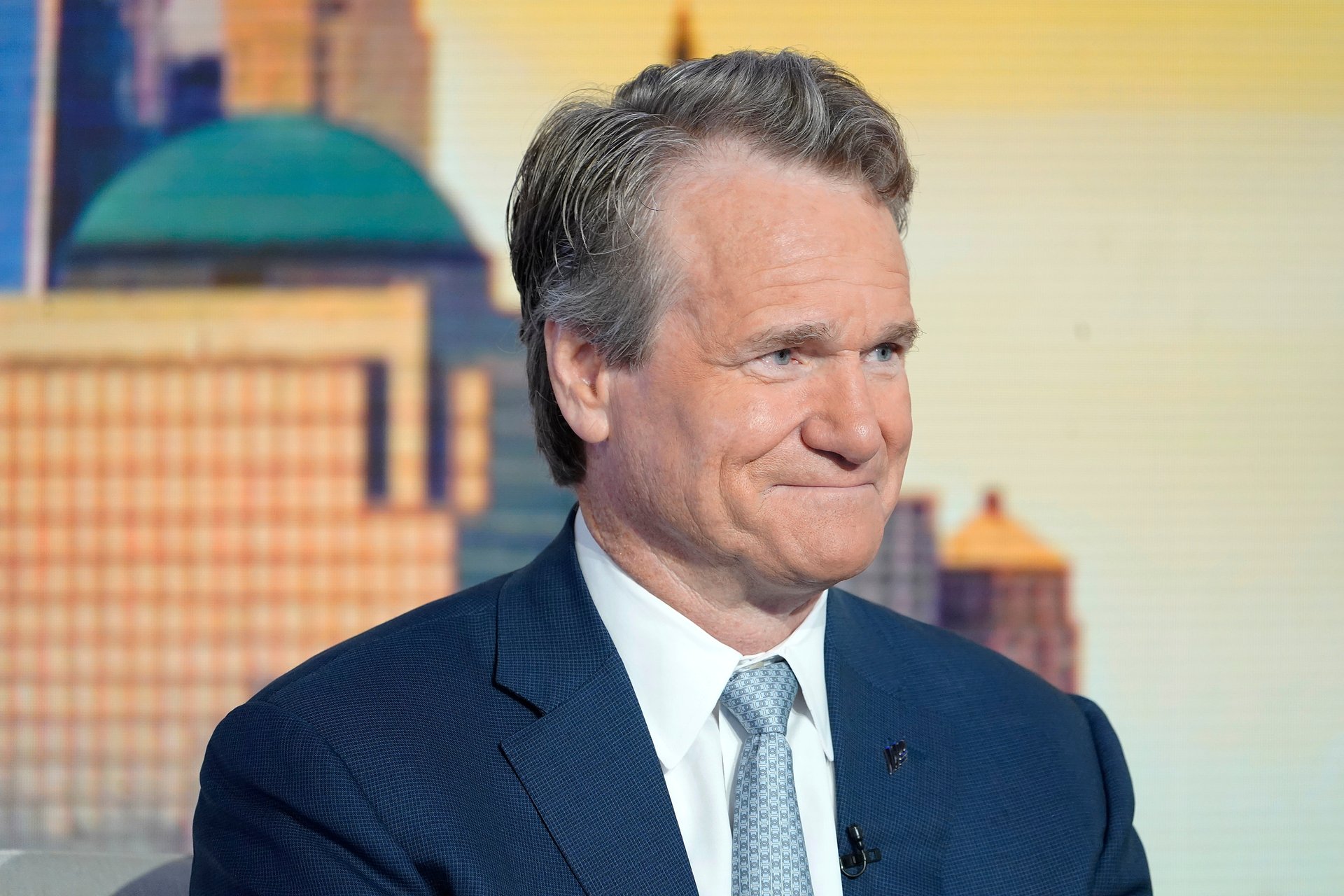The much-feared American recession isn't coming, Bank of America chief says
Brian Moynihan warned of a dispirited consumer if the Federal Reserve doesn't cut rates soon

Bank of America (BAC) chief Brian Moynihan said the bank’s research team “does not have any recession predicted anymore,” even as fears about the health of the U.S. economy continue to rise.
Suggested Reading
This time last year the bank had priced in a recession, but that’s no longer the case, Moynihan said in an interview with CBS Face the Nation Sunday. There’s little consensus about whether the central bank will pull off an elusive “soft landing,” bringing down inflation without tipping the economy into a recession.
Related Content
Last week, JPMorgan Chase (JPM) raised its odds of a recession by the end of this year to 35% from 25%, pointing to slowing inflation and higher unemployment. And JPMorgan CEO Jamie Dimon said in an interview Wednesday that there’s a 35% to 40% chance that the U.S. will have a soft landing.
Bank of America, the second-largest U.S. bank by assets, sees about 60 million customers spending each week, giving it key insights into consumer health. Moynihan said that the consumer spending rate has halved from this time last year, sitting at about 3%.
“The consumer has slowed down. They have money in their accounts, but they’re depleting a little bit,” he said. “They’re employed, they’re earning money, but ... they’ve really slowed down.”
Moynihan warned that the Federal Reserve has to be mindful about the consumer impact of keeping interest rates higher for longer.
“They’ve got to be more careful than the downside of not starting to move down rates to restore a feeling that, you know, there’s light at the end of the tunnel,” he said. “They’ve told people rates probably aren’t going to go up, but if they don’t start taking them down relatively soon, you could dispirit the American consumer.”
Bank of America has priced in two interest rate cuts this year, one in September and one in December. The Federal Open Market Committee, the decision-making arm of the central bank, is widely expected to lower rates next month.
Moynihan said the federal funds rate will likely end up at around 3%-3.5%. That’s down from the current 5.25%-5.5%, but well above pre-pandemic levels.
“We’re getting back to normal, and that’s going to take a while for people to adjust to,” Moynihan said. “Both on the corporate side and commercial side, and on the consumer side.”
Inflation rose just 3% in June, back on track towards the central bank’s 2% target. Meanwhile, he July jobs report showed unemployment ticking up more than expected to its highest level in three years, which some have seen as a sign that attempts to bring down inflation could tip the economy into a recession.
Tom Barkin, president of the Federal Reserve Bank of Richmond, said last week at a conference of business economists that the bargain-hunting consumer is at its limit — and that this price sensitivity will help bring down prices.
“While inflation is down, prices are still high, and I think consumers have gotten to the point where they’re just not accepting it,” Barkin said. “And that’s what you want: The solution to high prices is high prices.”
